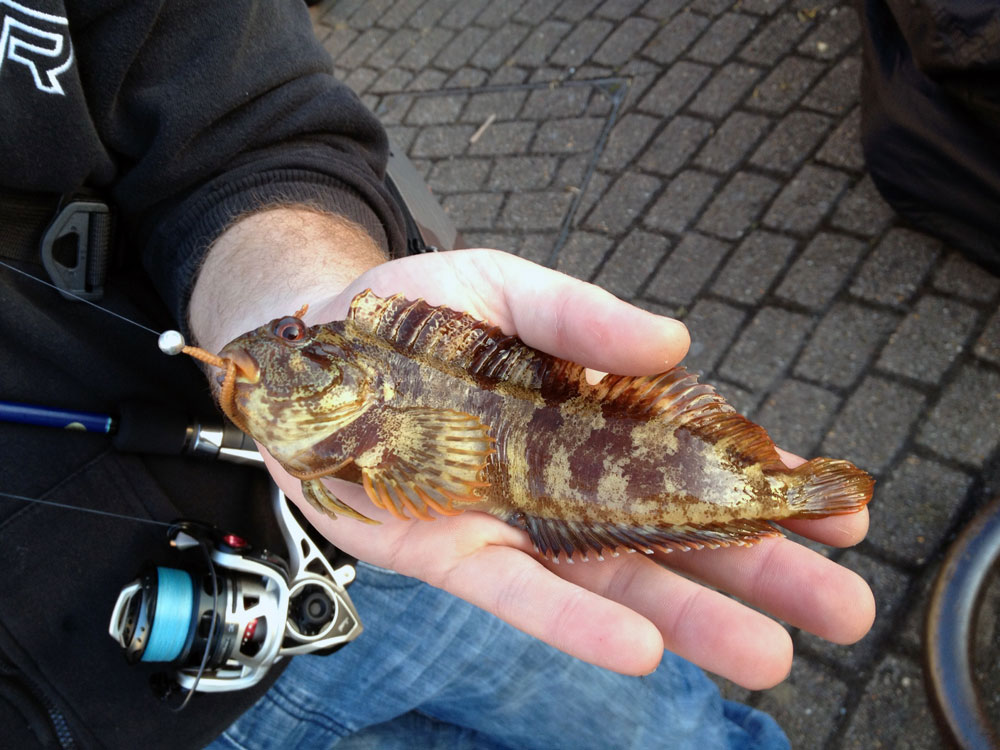Interest in LRF has exploded over the last few months, and anglers of all ages are queuing up to get involved in this uncomplicated and exciting style of fishing. In the first of a new set of dedicated features for beginners, hardcore LRF nut Will Harding explains how to get started.
In recent months the Internet, sea angling magazines and even television has embraced the Light Rock Fishing craze that is sweeping the UK. Passion for this simple and tremendously sporting form of sea angling is growing faster than anyone could have predicted. So what is all the mad fuss about? The question is simply answered – LRF catches lots of fish and hammers all sorts of species, some of which are intentionally targeted, while others are completely random captures.

Typically, gobies, flounder, different wrasses, blennies and bonus fish like bass and bream are obliging from the south coast venues that I visit regularly, but different parts of the country display different species tangents. In a nutshell, LRF is indiscriminate, it’s all-action and it is heaps of fun for anyone who cares to indulge.
Hailing from a coarse fishing background, the principles of LRF make simple sense to me. The premise is that if big fish aren’t feeding then why go home with a blank? Scale down rods and terminal tackle and catch what’s in front of you. Be under no illusion, big fish will pick up small lures and baits, and that’s where the real test in angling skill comes in. Even an average size mackerel will put up a spirited fight on basic LRF gear that will have any onlookers enthralled.
Island Pioneers
LRF in its current form was first seen locally in British waters after a group of anglers in Jersey started researching the Japanese market back in 2009, with likes of bass master Keith White pioneering the sport and overcoming the Japanese language barrier.
Soon methods and techniques never heard of in the UK lure fishing scene were being talked about. Within a matter of quick years there online lure superstores have sprung up everywhere. I can now walk into my local tackle shop, Chesil Bait n Tackle, and find finesse jig-heads, LRF rods, special braided lines that are the stuff of an LRF angler’s dream.


The typical Rods used for LRF are between 7 and 8 feet, rated 0.5-7g. There is plenty of talk about people using quiver tips from the freshwater market, and for anyone starting out and wanting to try LRF this isn’t a problem, but as soon as you have used a true Japanese built LRF rod there is no going back.
Take the Major Craft ZALTZ 7.3 rod rated 0.5-5g. The tip section is visually incredibly sensitive, yet it instantaneously transmits every bite straight to the angler’s hand. Hit a bonus bigger fish on this ZALTZ rod and just watch that super-fast tip bow into the powerful mid section. I’ve personally landed bass to 3lb on this rod and have complete faith that it can handle bigger. Couple such a rod with a lightweight 2500 sized reel, and you have the makings of a very well balanced LRF outfit.
Braid or Fluorocarbon?
Without going too deeply into detail about different mainlines, and confusing PE braid ratings etc… a 4lb fluorocarbon mainline is perfect for anyone starting out. In some respects it might be argued that a fluoro mainline has advantages over more expensive braided alternatives. One such would be the extra abrasion resistance around rocks. The heavier fluorocarbon lines are also much more user friendly in windy conditions that are common to the UK coast line, being largely immune to wind knot problems.

In future articles I’ll talk more about lures, rigs and retrieves, but the simplest, and in my opinion most effective method is a simple split shot rig. I normally use a size 14 or smaller hook coupled with a single AAA split shot pinched on one inch up the fluorocarbon mainline or leader.
Marukyu Ecogear
 My favourite lure/bait for this rig is the deadly Ecogear Power Isome – a ragworm imitation lure that is so realistic I have to show people the worms in the packet for them to believe it’s a lure, and better yet it’s biodegradable. Thread the Isome on the hook just like a standard ragworm, lower the rig down a harbour wall around any structure and just wait a few seconds for the gobies and sea scorpions to show interest then simply let the bite develop and gently set the hook.
My favourite lure/bait for this rig is the deadly Ecogear Power Isome – a ragworm imitation lure that is so realistic I have to show people the worms in the packet for them to believe it’s a lure, and better yet it’s biodegradable. Thread the Isome on the hook just like a standard ragworm, lower the rig down a harbour wall around any structure and just wait a few seconds for the gobies and sea scorpions to show interest then simply let the bite develop and gently set the hook.
In a matter of hours with this technique you can rack up a species count that some would say is impossible for lure fishermen. It’s that easy, and taking shelter around the harbour walls makes it loads of fun for families and perfectly safe for the children.
Coming Soon
Later I shall be discussing more about tackle and lure techniques: the ‘when and where’ to use ‘what’, and more importantly, ‘how’ it’s used, as well as explaining the targeting of all manner of winter species like whiting and flounder.
There’s lots more LRF information on my fishing blog at www.ngangling.blogspot.com Here you will find lots of links and stories about the ever-growing Weymouth LRF scene where everyone is welcome.





